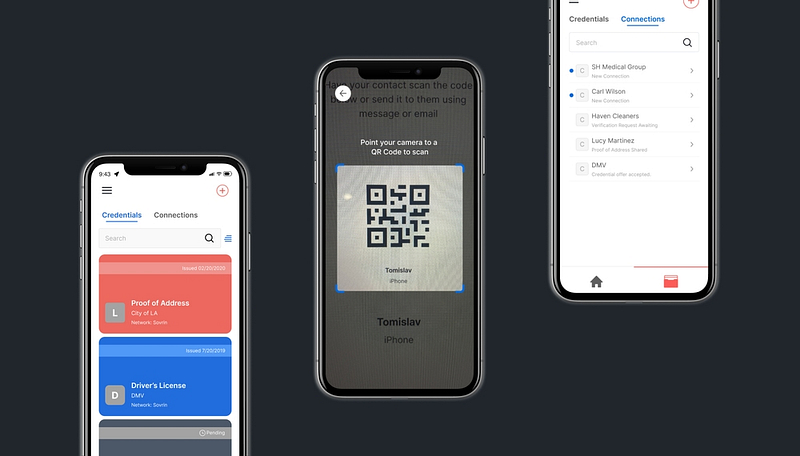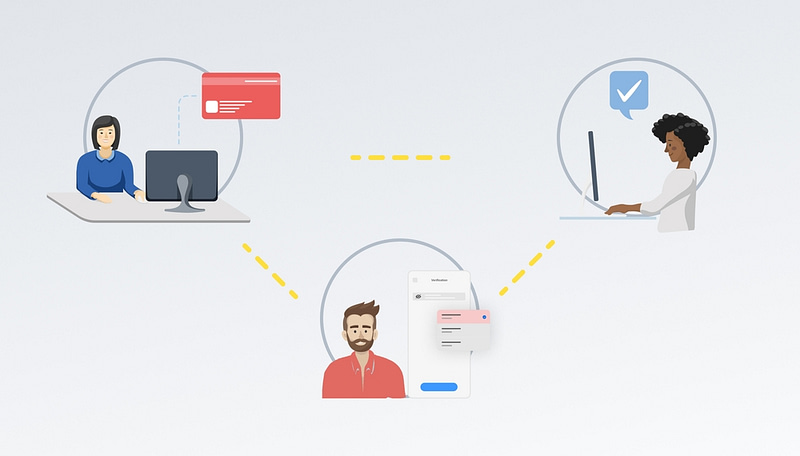An Introduction to the Trinsic Wallet

Note: This post refers to Trinsic’s version 1 platform and wallet application. While the details mentioned below are still accurate, new Trinsic users should refer to Identity Wallets in Trinsic Ecosystems to learn more about how we’re approaching wallets in our next generation platform. The Trinsic Wallet is a self-sovereign identity (SSI) digital wallet. People […]
Trinsic Basics: The Verifiable Credentials Model

At the core of every self-sovereign identity (SSI) use case is what we call the verifiable credentials model. This simple yet effective model helps conceptualize how verifiable credentials are exchanged between people and organizations. In the SSI community, you will often hear the verifiable credentials model referred to as the “Trust Triangle”. Often called the […]
Trinsic Basics: Open Source SSI Codebases

In a previous post, we discussed Trinsic’s commitment to making sure our platform is based on the most recent self-sovereign identity (SSI) standards. Because of that commitment, solutions built with Trinsic will always be interoperable and untethered from vendor lock-in. We implement those standards through open source codebases which power everything we do at Trinsic. […]
How to Create Connections in Trinsic Studio

Note: This post refers to Trinsic’s version 1 platform and wallet application. While the details mentioned below are still accurate, new Trinsic users should refer to Trinsic Ecosystems and Identity Wallets to learn more about how we’re approaching wallets in our next generation platform. In self-sovereign identity (SSI), the securest way to share, issue, and verify credentials […]
How to Issue Credentials in Trinsic Studio

Trinsic Studio is the best and simplest tool for verifiable credential exchange. Through the Studio, developers can seamlessly manage their self-sovereign identity (SSI) integrations, all in one easy-to-use web application. Designed for simplicity and usability, Trinsic Studio has all the tools you need to build an SSI solution. In this how-to post, we will […]
Trinsic Basics: What Are SSI Standards?

Standards are an important part of the Trinsic platform. Our vision is that people everywhere will have a digital identity that’s as legitimate as their real-world identity. In the real world, standards are an important part of identity. Why do you think that driver’s licenses from different states contain the same information? Or transcripts from […]
Webinar Recap: Making Money with SSI

Self-sovereign identity (SSI) promises to deliver innovation and value in every industry for a variety of use cases. It’s already picking up steam in financial services, healthcare, and government sectors around the world. But in order to get widespread adoption, sustainable business cases need to be developed—not just use cases. In our recent expert-panel webinar, […]
Trinsic Basics: The Three Models of Digital Identity

Digital identity has advanced over time, most recently culminating in self-sovereign identity (SSI). In this Trinsic Basics post, we are going to briefly cover the different models of digital identity and how SSI is the next step in the digital identity evolution. The content in this post is inspired by a blog post written by […]
Combining Verifiable Credentials and Smart Contracts for COVID-19 Data Management

Over the past few months, a number of apps have been developed that use verifiable credentials to streamline the transfer of data in the COVID-19 testing process. However, Bart Cant, Founder and Managing Partner of Rethink Ledgers, decided to use a unique approach in developing his prototype app. Not only did he use verifiable credentials […]
Trinsic Basics: What Are Decentralized Identifiers (DIDs)?

“Identifiers” are how you are identified as a unique person and recognized as that same unique person over time. With other people, your primary identifier is your face. With organizations, it might be a student ID, social security number, or driver’s license number. Online, it might be a username, phone number, or email address. […]
